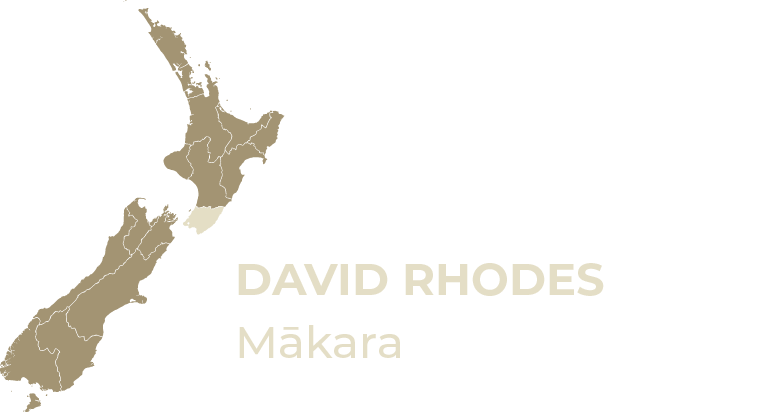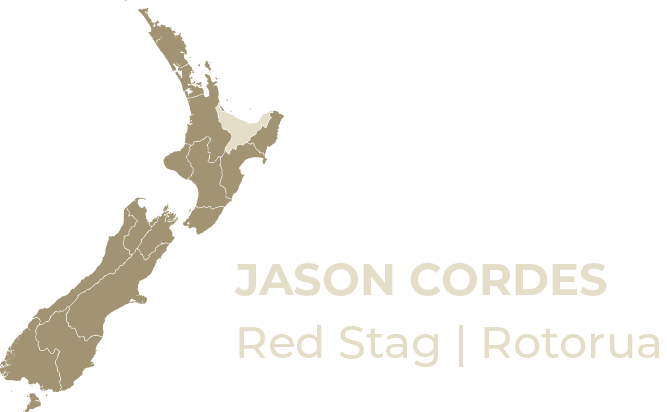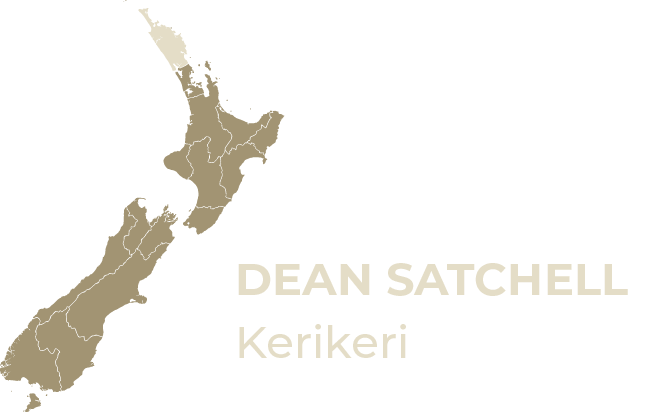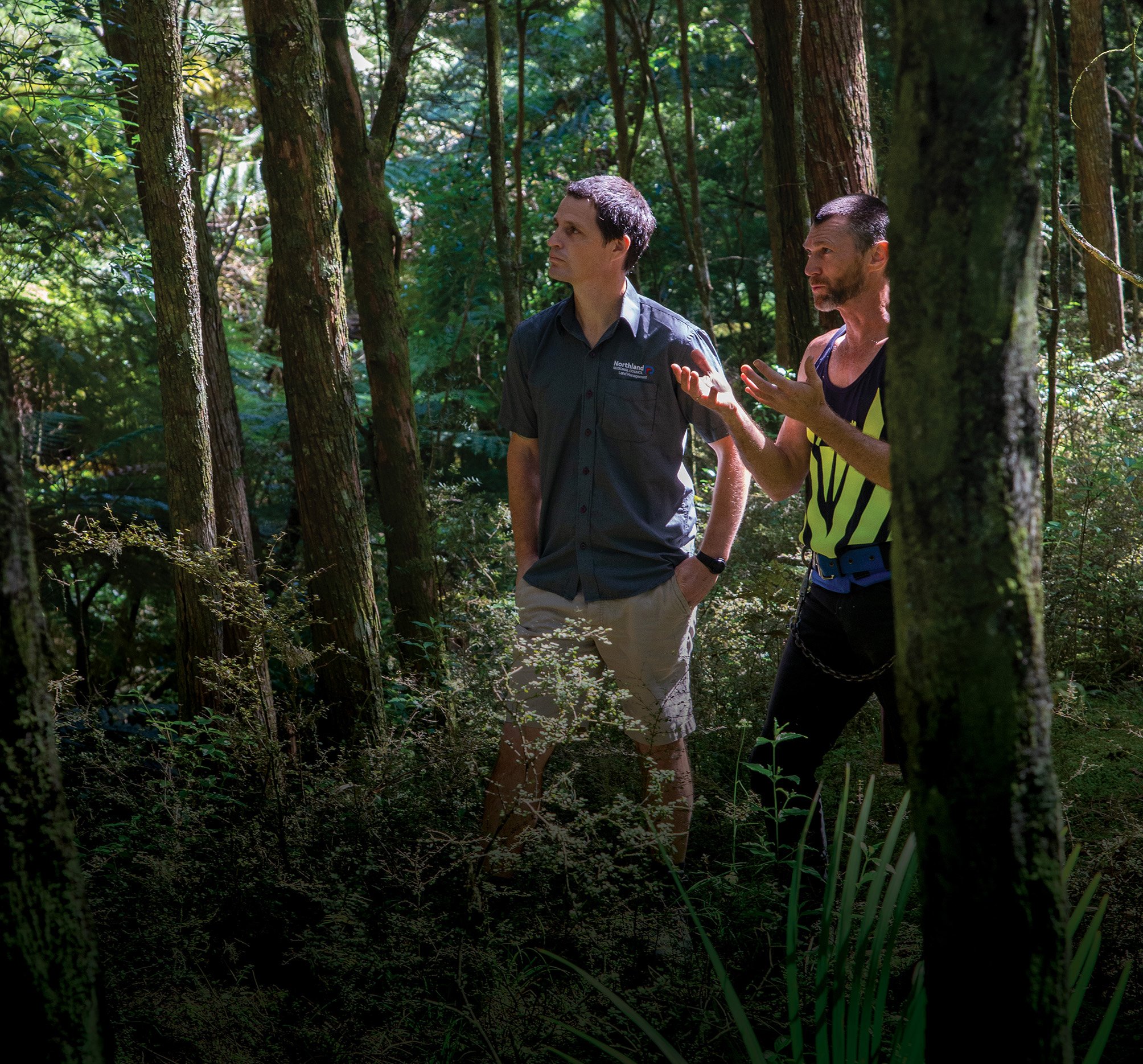Wood: our low-carbon future
There’s a lot of environmental answers to be found in wood.
Forests sequester huge volumes of carbon from the atmosphere and so combat climate change. We won’t be able to get near to carbon zero by 2050 without planting more fast-growing trees.
Modern wood-engineering technology is being used to create buildings many storeys high. These structures continue to store the carbon and avoid the greenhouse gas emissions of concrete and steel.
Wood is an ideal building block for the emerging global bioeconomy. For manufacturing and for energy, wood replaces carbon dioxide spewing from coal and oil.
Wood’s also a great natural environment to enjoy living in.
The Living Pā
Wellington architect Julie Cook says she’s really starting to appreciate how the Living Pā at Vic University on Kelburn Parade will look when it’s finished.
“We’re only a year off completing the job and the primary build is all but done. Everyone can now appreciate the light, and the warmth in this very special building. The pōhutukawa coming into blossom just outside the windows on the top floor reinforces that connection to wood and nature.”
The Living Pā is being built with carbon storing engineered mass timber, instead of concrete and steel. Drawings were fed into computers in the Nelson and Rotorua mills, so when the huge prefabricated wooden beams and panels arrived in Wellington
they only needed to be dropped into place.
The Living Pā is going to be certified to Version
Four of the international Living Building Challenge. There are only 32 certified LBC buildings around the world because the standards are so challenging. LBC constructions have to be functional and beautiful as well as environmentally positive with strict sustainability credentials.
For Julie, and her team in Tennent Brown, the mātauranga Māori values in the Living Pā are also a huge influence on the project.
The fussy emblings
Dianna Tirini and her team at Timberlands’ nursery lab in Rotorua need to treat their various tiny pine cuttings quite differently. They are selected, for example, to grow faster, or tolerate a drought.
When the embryos grow to paper-clip size they are called emblings and ready to be diced up to grow into seedings.
But some emblings are unbelievably fussy. Only the top part of #6000 is likely to grow well. Yet any bit of the tough #U12 019 happily takes off in the petri dish.
This year, an ever so slightly damper growing season has made millions of seedlings useless for planting because they’ve caught terminal crook fungus.
That’s made another job for Dianna’s Timberland’s lab – finding pines which resist terminal crook and, here’s hoping, are not fussy emblings.
Bikers in
the forests
David Rhodes has just retired, after 18 years as boss of the Forest Owners Association. Like so many other New Zealanders, and overseas tourists too, he likes biking in our forests.
One of his favourite rides is here in a pine plantation at Mākara.
Economist Benje Patterson has calculated that bikers, when they tour 96 different plantation pine forests around the country, spend $291 million a year in local motels, cafés and the like.
The bikers are also $130 million healthier.
Benje Patterson says the forest bikers’ contribution will increase to $318 million in the next five years.
Some of the extra, no doubt, will be from David Rhodes with extra time now to do more biking.
Carbon storage
At the Mystery Creek National Fieldays late last year the first ever Forestry Hub featured a cubic metre of pine timber block at the front entrance. It attracted a lot of attention. The idea was to show off the amount of carbon trees take out of the atmosphere to combat climate change. Half of the cube is carbon – all safely out of the atmosphere.
Cutting a cube that big turned out to be rather a job. First Manulife had to find a tree large enough in their forests but which could be safely felled. They eventually found a 60-year-old at one of their blocks at Lichfield which was right next to the road so it could be trucked away. Big as it was, its girth was not enough to cut a regular square cube. You’d have to find a pine tree more than 100 years old for that.
Expert treefeller TJ Thompson was called in to bring the tree down – the biggest pine he’d ever put the chainsaw to. Radio New Zealand agriculture reporter Susan Murray came along to record the event. Everyone had to wait two hours for the mist to clear enough to take video as well.
Then the guys at Putaruru Portable Sawmillers took over. Carefully measuring out a cube metres long to get exactly one cube of volume. They’d never done a job like that before either. They got it slightly wrong the first time up. Fortunately, TJ had cut off enough tree for another attempt. PPS got it spot on next time around.
Then at the Fieldays the cube was on display. There are 530 million such cubes of wood making up trees in the national pine forest estate. In fact, our plantation pines are growing an additional ten million tonnes of carbon into their wood every year. That is re-absorbing most of the carbon Aotearoa New Zealand emits into the atmosphere every year.

Every year New Zealand’s transport and industry emit about 40 million tonnes of carbon dioxide into the atmosphere which accelerates climate change.
But the good news is that our plantation forests re-absorb more than half of it back again.
Cooking
wood to make
it durable
Bianca works at Donelley Sawmillers at Alamein Road in Reporoa. Her dad, Aaron is the boss. Her grandparents Morgan and Shirley started the mill in the 1970s, making fence battens.
The whole family is into swimming. Donelley’s donated Abodo treated wood to Rotorua’s Aquatic Centre to promote the Rotorua Lakes Council’s Wood First policy.
Abodo is wood cooked in a kiln. It’s very durable. Donelley’s has just installed another processing line to meet market demand, for exports to build everywhere from Jersey in the English Channel to Hampton Roads on the US eastern seaboard.
It keeps Bianca busy in the office – when she’s not pushing the buttons down at the kiln.
Read more about the Donelley Sawmillers at abodo.co.nz.
Timber engineering showcase
The new five storey Clearwater Apartments in Christchurch – a showcase of the amazing things which can be achieved by modern timber engineering.
Not only was it 15% cheaper to construct than a comparable concrete building, but its carbon emission reduction credentials
are hugely impressive.
The wood continues to store the carbon which the trees sucked out of the atmosphere to grow.
It also means nearly 1,000 tonnes of C0₂ weren’t emitted. That’s how much extra would have gone into the atmosphere if Clearwater had been made with concrete.
Mokena Makeka’s world forest future
Mokena Makeka was raised in Maseru the capital of Lesotho, and in New York.
Mokena, and his similarly international team at Dalberg Advisors, have reported to the COP27 Climate Summit at Sharm el Sheikh, that trees and wood are important to combat climate change and get to zero emissions.
Mokena’s message is that forests are vital to take carbon out of the atmosphere – which everyone knows anyway. But, as well, he says, each country is different and should independently work out which trees work best for them.
He says too, that using wood is just as vital to combat climate change as growing trees.
Around the world, from New York to Maseru, people are still flocking to live in cities. Planners are keen to house them in wood, rather than building with carbon emitting concrete and steel.
Wood like Ferraris
For Jason, Ferrari’s famous Formula One international-circuit workshop is the pinnacle of how to operate.
He models Ferrari’s attention to detail, precision engineering and lots of thinking, at the massive new Red Stag Cross Laminated Timber plant at Rotorua.
Red Stag uses cutting edge technology on premium pine timber to craft huge Cross Laminated Timber panels, up to 19 tonnes each, to specifications within a millimetre.
Red Stag supplies throughout New Zealand and is about to build another production line to keep up with growing demand for commercial buildings which are safer, quicker to build and store carbon in the wood.
But Jason still observes the human attraction for timber as a natural material. Everyone who visits the plant, he says, will stroke the timber in appreciation the first chance they get.
Chipping Away
Rodney says his chipping machine can chew up a log in eight seconds flat.
The wood chip business is growing with two major local dairy processors, at Balclutha and Stirling, converting away from polluting brown coal to using wood chip to heat their milk driers.
Local schools are doing the same, and Rodney calls wood fuel the way of the future, using a renewable, clean burning and abundant fuel source.
Pinus radiata chips are best he says. They chip cleanly without stringy bits, and don’t clog up the augers which are used to feed the chips into the big boilers.
New floors for dairy farms
Peter Lansdaal anticipates a whole new industry is going to be needed to supply Waikato dairy farmers with wood chips for calf bedding and cow stand-off and loafing pads.
And at the same time, dairy companies want the same wood chip, or wood pellets, for their milk powder driers.
Peter likes wood chip in his calf shed for his Jersey calves. The chip is natural, locally available, keeps the calves dry, and makes a great fertiliser afterwards when the calves move off to life on the pasture.
He trucks in up to 200 cubic metres of chip each year to make his precious new-born calves comfortable.
The sawmill, of course, saves the best logs for timber.
The native timber which takes its time
John Wardle’s native black beech planks are like fine wine. They need time to reach their peak.
Every year John sustainably cuts some mature black beech on his property at Oxford, on the hills inland from Christchurch.
Unlike most timber, the black beech can’t be dried over a few hours in a kiln. It takes a whole slow year in his shed before he sends it off for turning into flooring or furniture.
But by then it’s incredibly stable and won’t shrink.
Many old Canterbury buildings are made from black beech and there was once a thriving export market in Melbourne, from floorers who liked it better than their own Australian hardwoods.
It comes from Mother Nature
Riley got her job after the woodwork teacher at her school told her there was an apprentice job going at Hale’s joinery at Addington.
Trees are from Mother Nature, she says and it was so eye-opening to see all the beautiful things Hales were making for people out of wood.
Riley says working with her hands is a much better life than daydreaming over paperwork in an office somewhere.
Champion of the Cypress
The scent from freshly cut macrocarpa is amazing and evocative.
It brings back memories – stacks of firewood from the macrocarpa shelterbelt at grandpa’s farm in the backblocks.
But that is not why Dean Satchell is a fan of macrocarpa and other cypress species.
He’s interested in timber. Though they take longer than radiata pine to grow to harvest maturity, he says these cypress, and some other exotics, deliver lumber twice the value.
Dean says the best way to harvest these trees is to identify each tree when it’s ready and leave the trees around it to maintain a permanent forest.
Cypress trees are prone to getting canker, but new cypress hybrids are more resistant to this infection.
The New Zealand Farm Forestry Association has lots of on-line advice on how to grow cypress.
Forest work and the Big Rigs
Callum aims to run his own forest contracting crew one day.
But the 18-year old’s immediate goal is to finish getting his tickets to operate the huge harvesting machinery, which is routine nowadays in a modern plantation forest.
Harvest mechanisation has rapidly increased during the past decade, making the work much safer for Callum and his mates.
There are harvesting machines with cabs to replace chainsaws and ‘skidder’ vehicles to haul the logs.
Callum got his job at Roxburgh Contracting, through the Year-13 Gateway Programme at South Otago High School.
Now he’s set to be a forester for life.
Protecting
the bush
Ian Tarei’s job is to keep Mt Putauaki and its surrounding area clear of predators.
Ferrets, stoats, weasels, rats, hedgehogs and feral cats all prey on the native birds, such as kiwi. The birds suffer and so does the native bush.
With backing from the Bay of Plenty Regional Council, Nga Maunga Kaitiaki Trust and Save the Kiwi, Ian and his team run hundreds of bait stations and traps to keep predators under control.
It’s a long-term job, and Ian these days has his moko working alongside him, proud to be caring for the special mountain of their Ngāti Awa rohe.
Dealing to the pests – and diseases – of our native and exotic forests is vital to keep them thriving.
Planting a gum tree in the Catlins
Harley Cullen, aged 4, is keen on trees.
She and little sister Brooke know these seedlings will be big trees one day on the family farm.
For the moment though, it’s Brian Denston’s job to actually put them into the ground. He’s worked out that he has planted at least 200,000 trees on the tougher parts of the Cullen farm at Owaka over the past 35 years. So he’s looking forward to the day when the Cullen girls can do the digging instead.
Meantime, their father Simon, can concentrate on farming sheep and beef animals on the flatter and fertile parts of the farm where they do best.
Sawing timber onsite
Lee was raised on a wooden boat, so he’s always loved working with wood.
He runs a mobile sawmill in Northland – which means he takes his mill to where the trees are. That saves foresters the cost of transporting their logs to a processor.
Lee mills a lot of trees from old orchard shelterbelts. He needs all of his operating skills to get the best timber out of such a variety of logs.
He says the most durable wood comes from eucalyptus, cypress, Japanese cedar and redwoods.
Tōtara in
the North
Farmers in Northland are looking to the natural regeneration of tōtara as a long term sustainable timber resource.
Tōtara is drought resistant, suits most lowland locations, and grows relatively quickly in the right environment.
Its timber is durable and versatile.
The Northland Regional Council is supporting the development of a tōtara industry in the province.
John says tōtara suits marginal land, helps soil conservation and will provide jobs.
He also says tōtara timber can replace imported tropical timbers.
Trees Fighting Global Warming
Waikato University offers a multidisciplinary degree course
in climate change, which it says is unique in the world.
Mya has enrolled because she wants to do something impactful and help the environment.
She says trees are really important in taking carbon
out of the atmosphere and reaching our zero carbon goals.
Wood biofuels to keep carbon in the ground
There’s a lot of environmental answers to be found in wood.
Around the world, coal has safely stored hard carbon below the ground’s surface for millions of years. But when coal (or oil) is burnt for fuel, the carbon is turned into carbon dioxide. It dangerously warms the planet.
Dairy companies are responding to this. They have been using huge volumes of coal to dry milk into powder. Now they are turning to wood fuel.
Likewise, schools and other institutions are choosing clean burning wood.
At Nature’s Flame at Taupō, they are turning locally sourced wood chips into wood pellets. The pellets have a greater calorific value than wood chips, so transporting the pellets any great distance is more efficient and environment friendly – which includes exports of Nature’s Flame pellets to South Korea.








































